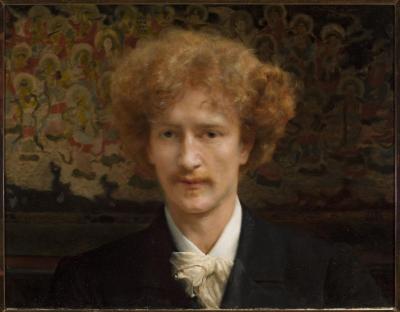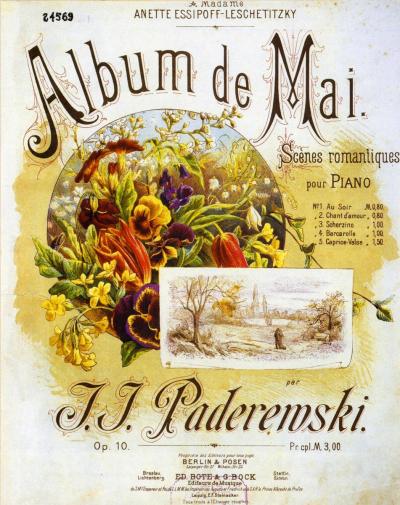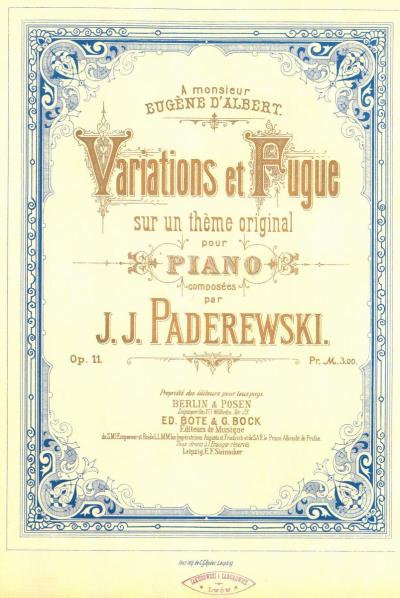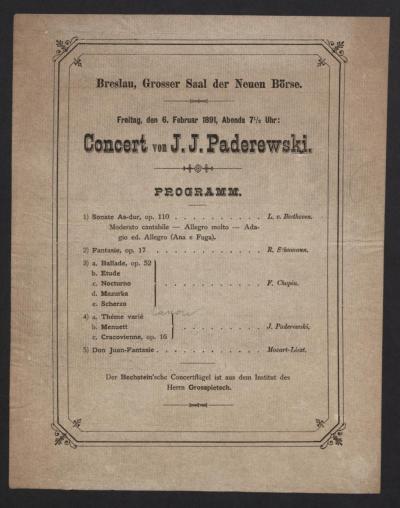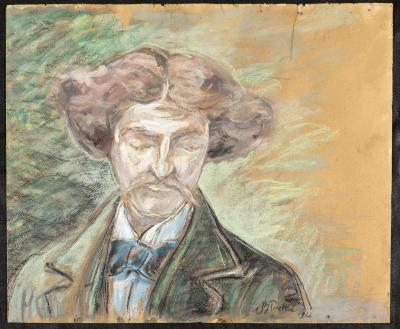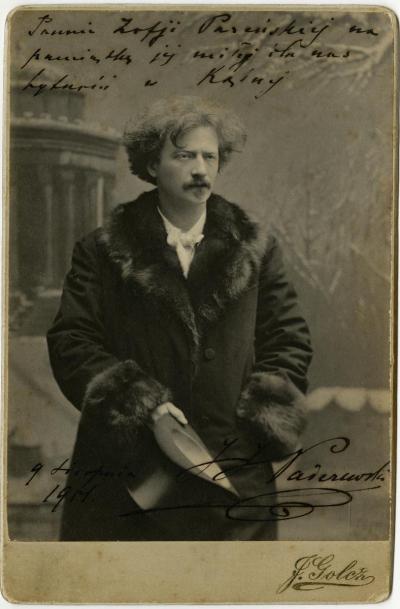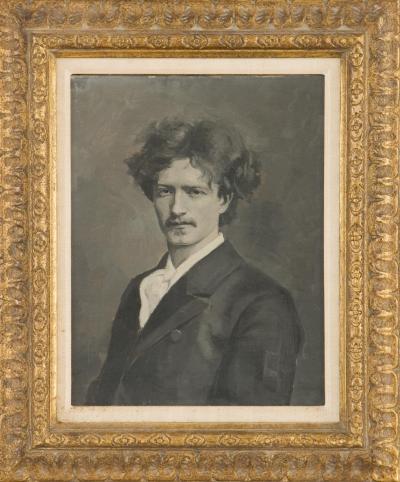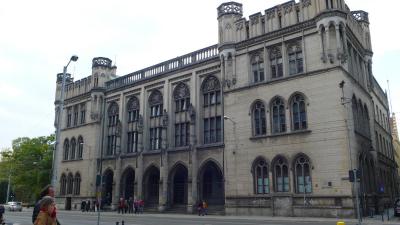Paderewski in Breslau
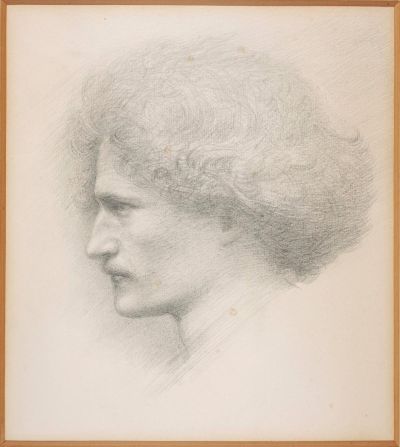
Paderewski in Breslau
„Music alone is truly a living art. Its elements, its vibrations, its dynamics are all elements of life. Hushed yet audible, tremendous yet unrecognised it is everywhere where life is”.
Quote from a speech made by Ignacy J. Paderewski during the Chopin festivities on 23 October 1910 in Lviv.
Ignacy J. Paderewski (1860 – 1941) is a “Pole with a unique status”[1], a world-famous pianist, composer, statesmen and social activist. In every respect he is an extraordinary personality even though he has now somewhat fallen into oblivion.[2]
One music critic from Paris described him as the “Prince of pianists”. But there has never been a Prince, not even a ruling Prince, who has enjoyed such great popularity as the composer of “Manru” did every single day of his life at the height of his career.”[3]
In a recent television programme the musician and composer Krzesimir Dębski recently recalled that Paderewski had been a social phenomenon in the United States at the beginning of the 20th century and compared him to contemporary superstars in pop music like Michael Jackson![4]
In 1890 Ignacy J. Paderewski followed up his first appearances in Vienna with a successful recital in Paris where his interpretations of Chopin were received with huge enthusiasm. In a letter to his wife, Wojciech Kossak recalled one of the artist’s recitals in Paris in the following words: “Today I went to a concert on St Casimir’s Day. Paderewski played like an angel; the whole of Polish ‘high life’ was there […]”[5]. This comment wonderfully reflects the appeal of the pianist who simultaneously transformed himself into an “angel” with his interpretations. This “angel” gave a metaphysical dimension to his tonal art and whisked his audiences into an invisible transcendental world.” “(…) People were spellbound by an ecstatic impression, as if they had entered into an immaterial bond with ART, a communion with celestial beauty”. [6] Furthermore Paderewski’s piano style was the quintessence of the Polish spirit, not only superficially as expressed in the dancing élan of polonaises and mazurkas but also in the true sense of the Polish nation as it was deeply felt and experienced. For even when he spent the majority of his life abroad Paderewski always considered himself to be Pole, a fact that he often underlined and of which he was very proud.
[1] In the Paderewski year, 2001, the Ignacy Jan Paderewski Museum of Polish Emigration - a department of the National Museum in Warsaw [Muzeum Ignacego J. Paderewskiego i Wychodźstwa Polskiego – Oddział Muzeum Narodowego w Warszawie] organised an exhibition entitled "Paderewski Year” and published an accompanying booklet "Polak miary niepospolitej. Ignacemu Janowi Paderewskiemu w 140.rocznicę urodzin” [A Pole of exceptional greatness. On the 140th birthday of Ignacy Jan Paderewski].
[2] In 2001 in Wrocław the Ignacy Paderewski Foundation for the Rebuilding of Democracy [Fundacja Odbudowy Demokracji im. Ignacego Paderewskiego] recalled Paderewski on the occasion of an exhibition dedicated to him and presented in the Breslau City Hall.
cf.: C. Kaszewski, Fortepian i polityka, [in:] „Słowo Polskie” 2.-3.05. 2001, p.14.
[3] A. Grzymała-Siedlecki, Fundator Pomnika Grunwaldzkiego [an article on the artistic and private life of Jan Paderewski], [in]: Ignacy Jan Paderewski – artysta, społecznik, polityk – w opiniach jemu współczesnych. Antologia tekstów historycznych i literackich dla uczczenia 150. rocznicy urodzin wielkiego Polaka, edited by M. M. Drozdowski and X. Pilch- Nowakowska, Warszawa 2012, vol. 2 , p. 381.
[4] „Magazyn kulturalny - drugie śniadanie mistrzów”, broadcast by TVN24 on the 11.05.2013.
[5] W. Kossak, Listy do żony i przyjaciół ( 1883 – 1942), edited by K. Olszański, Kraków, Wrocław 1985, vol. I , p. 176.
[6] J. Waldorff, Wygrał Polskę na fortepianie, [in:] Ignacy Jan Paderewski – artysta, społecznik, polityk- w opiniach jemu współczesnych. Antologia tekstów historycznych i literackich dla uczczenia 150. rocznicy urodzin wielkiego Polaka, edited by M. M. Drozdowski and X. Pilch-Nowakowska, Warszawa 2012, vol. 1, p. 294.
In the same year Paderewski undertook his first tour of Great Britain. At first English audiences reacted with cool reserve but in the end they were bewitched by his temperamental recitals.[7]
Queen Victoria herself invited him to give a special recital at Windsor Castle where she was enchanted by the power and depth of his artistic expression.[8]
In London Paderewski also aroused great interest because of his extraordinary appearance, a slender pale faced figure surrounded by a brilliant red bush of hair. Adam Zamoyski rightly remarked “(…) Given the colour of his hair, his head was something that the so-called Pre-Raphaelite artists could only dream about”.[9] Here we might add a statement attributed to Edward Burne-Jones (1833-1898) after his meeting with Paderewski: “a certain young man by the name of Paderewski is currently staying in London. I would love to have such a face and look like he does (…)”. [10] The pianist Harold Bauer was also entranced by Paderewski’s features: “I saw his head when he appeared on the stage of St. James Hall and I shall never forget it”.[11]
Paderewski’s idiosyncratic appearance made him an ideal model for many contemporary painters. Burne-Jones, for example, made a pencil drawing of the pianist’s head[12], whereas Lawrence Alma-Tadema (1836-1912) completed a well-known oil painting of the artist that has gone down in art history.[13] Paderewski recalled this painting in the diaries he dictated: “(…) Alma-Tadema’s portrait is a true masterpiece from the point of view of art”.[14] The painter placed the artist against a background consisting of two coloured areas, an orange and yellow textile wallpaper and a dark olive-green wall panelling. The tonality of the painting is based on the highly contrasting composition of the colours, with its very clear distinction between light and dark. His pale face and white shirt contrasts strongly with his dark dress coat. The transition is lessened by the blurred contours. This wonderful academic portrait is one of a cycle of famous Victorian and Edwardian musicians painted by Alma-Tadema.[15] Today it can be found in the collections of the National Museum in Warsaw/Muzeum Narodowe w Warszawie.
It should also be mentioned that Paderewski and Alma-Tadema were great friends. The artist was invited to take part in the festivities in Lviv that marked the 100th birthday of Frédéric Chopin in October 1910, during which the first meeting of Polish musicians also took place.[16]
[7] The “Gazeta Lwowska” (Nr. 121, 30.05.1894) published an anecdote entitled "Paderewski i angielska „lady” [Paderewski and the English "Lady"], ostensibly about Paderewski's success with women during his visit to the British Isles. I quote from the complete text: "The outstanding pianist must have had to put up with many wearisome encounters with frantic women from the top echelons of London society. Shy, with downcast eyes, the sight of Paderewski playing must have sent the slender English ladies into ecstasy and killed him with their outbreaks of emotion. The passionate daughters of Albion give the poor artist no peace, magnetised him with their gaze, electrified him with the pressure from their long fingered hands. As a London newspaper reports, a few days ago Paderewski played in one of the major art salons. Suddenly a certain woman approached the grand piano, snatched one of the artist’s hands and pressed a kiss on it. The artist tore his hand away from hers and in doing so he unintentionally touched her face. She imagined he had tried to box her ears and fainted. It was only later that the situation was cleared up and those present quietened down".
[8] W. Dulęba, Z. Sokołowska, Ignacy Jan Paderewski. Mała kronika życia pianisty i kompozytora, Kraków 1960, p. 56.
[9] A. Zamoyski, Paderewski, Warszawa 2010, p. 62.
[10] Zamoyski, op. cit., p. 62.
[11] Zamoyski, op. cit., p. 61.
[12] D. Walawender-Musz (ed.), Śladami prerafaelitów. Artyści polscy i sztuka brytyjska na przełomie XIX i XX w., [Ausstellungskatalog], Muzeum Pałac w Wilanowie, Warszawa 2006, p. 32.
[13] R. Ash, Sir Lawrence Alma- Tadema, London 1995, [p. 4].
[14] I. J. Paderewski, Pamiętniki, transcribed by M. Lawton, Kraków 1972, vol. 1, p. 238.
[15] I. Danielewicz (ed.), Akademizm w XIX w. Sztuka europejska ze zbiorów Muzeum Narodowego w Warszawie i innych kolekcji polskich, [Exhibition catalogue], Muzeum Narodowe w Warszawie, Warszawa 1998, p. 46.
[16] “Kurjer Lwowski”, Nr. 493, 24.10.1910.
Lawrence Alma-Tadema made his portrait of Paderewski in summer 1891.[17] We may assume that the pianist looked exactly as he did when he visited Breslau for the first time in February 1891, when he was not yet famous. His vibrant artistic career had just begun and soon after he was to experience one of the most important moments in this career, his debut at the New York Music Hall (today the Carnegie Hall) on the 17th November 1891.[18]
Music fanatics in Breslau were certainly award of Paderewski’s talents as a composer through his popular Minuet in G Major, a piece that he played a lot. They were all the more curious to have a personal impression of the virtuoso pianist. Ignacy J. Paderewski made his first appearance in the capital of Lower Silesia on 6th February 1891 in the auditorium of the New Exchange on Graupenstraße (now: ul. Krupnicza).[19] The recital began at 19.30 and comprised works by Beethoven, Schumann, Chopin and Liszt, as well as three of the pianist’s own compositions played on a Bechstein. His expressive playing conquered the hearts of the audience and was received warmly by the critics. The well-known Breslau musician and scholar, Emil Bohnen, expressed his admiration for Paderewski’s masterly technique and his excellent interpretation in a long article on the title page of the “Breslauer Zeitung”.[20] Ernst Flügel, a recognised music critic, expressed his admiration in similar tones in the “Schlesische Zeitung” in the following summary: “Mr Paderewski is the most brilliant pianist that I have ever heard anywhere”.[21]
The report in the “Dziennik Poznański” (Poznan Newspaper), is also worth mentioning. It described the recital as a “true feast for the soul” and emphasised its extraordinary artistic significance. “We Poles, as witnesses to the triumph of one of our compatriots, are truly justified in our feelings of delight and pride; this triumph is all the greater for taking place in the midst of a prejudiced element.”[22]
[17] D. Walawender-Musz (ed.), Śladami prerafaelitów ….., p. 31.
[18] M. Perkowska, Diariusz koncertowy Ignacego Jana Paderewskiego, Kraków 1990, p. 45.
[19] A. Zieliński, Koncert Paderewskiego we Wrocławiu, [in:] Kalendarz Wrocławski 1979, p. 215.
[20] “Breslauer Zeitung" Nr. 97, 8.02.1891.
[21] “Schlesische Zeitung", Nr. 97, 8.02.1891.
[22] “Dziennik Poznański", Nr. 32, 10.02.1891.
It should be noted here that Paderewski possessed an exceptionally charismatic personality. He also had the rare talent of giving his recitals a unique aura, so that his audience was enchanted by his magical playing. Tadeusz Szeligowski explained it thus: “Paderewski does not just play for pianists, not for musicians – he simply plays for people. He hits every nerve in their being and every corner of their souls. His interpretations seem to be the only ones possible in the moment. The compositions played by Paderewski are nothing more than an opportunity for this magnificent artist to manifest his magical powers.”[23]
The artist also benefited from his looks, for he left behind a suggestive impression in the minds of his listeners. People were also deeply moved by the maestro’s grace, his erudition and his extremely cultivated manner. All these qualities were to make him the idol of the masses in Europe and America shortly after his debut recital in Paris.
Paderewski celebrated an unbroken range of successes between 1891 and 1901. His appearances in the United States were met with huge enthusiasm from his audiences. As already mentioned, Paderewski was an unusual social phenomenon. Here we should recall that he was the first pianist in the world to undertake so many tours. This explains why he had such a large circle of admirers. With the exception of Asia he played recitals in every continent. His repertoire primarily consisted of romantic works, mainly by Chopin and Liszt, as well as his own compositions. He opened almost every recital with one of Beethoven’s sonatas, mostly the Sonata in F minor (the so-called Appassionata) or the Moonlight Sonata in C sharp minor.
Paderewski also enjoyed a reputation as a composer before his star as a virtuoso pianist began to rise ever higher. Apart from his minuet in G Sharp he also composed works like the “May album” (Album Majowe) op. 10, the movement cycle entitled “Tatra Album” (Album Tatrzańskie) op. 12, based on transcribed melodies of the Goral people, as well as songs written to poems by Adam Mickiewicz and Adam Asnyk. He regarded his “Variations and Fuge on an Original Theme” (Wariacja i fuga na temat własny) op. 11. as his best composition.
[23] W. Dulęba, Z. Sokołowska, op. cit., p. 6.
Paderewski’s opera “Manru” had its premiere at the Royal Court Theatre in Dresden [now the Semperoper] in May 1901. The libretto was written by Alfred Nossig and based on the novel “Chata za wsią” (A Hut behind the Village) by Józef Ignacy Kraszewski. The Polish premiere of the Opera took place on 8 June 1901 in Lemberg. The title aria was sung by the well-known tenor, Aleksander Bandrowski. The audience greeted the composer with great enthusiasm.[24] The Lemberg municipal theatre was specially decorated for this premiere and lit up with the word MANRU.[25] The opera enjoyed some success and was subsequently produced in many opera houses in Europe and America.
In autumn 1901 Paderewski arrived in Breslau covered in the glory of his reputation. His recital took place on 26th October in the stately main auditorium of the Breslau Concert House on Gartenstraße (today, ul. Piłsudskiego).[26] This time he performed on a Steinway grand piano, a firm that he promoted and to whom he was contracted on a long-term basis.[27] His performance was greeted with enthusiasm by both the audience and the music critics. Emil Bohn was entranced. He wrote in the “Breslauer Zeitung” that the audience was gripped by the pianists enthralling playing. He underlined the fact that this Paderewski’s first appearance in Breslau in 1891 marked the start of a fascinating career, whereas now this genius was surrounded by an aura of success and fame.[28] This was the reason why popular interest in the recital exceeded even the wildest expectations, as proved by the fact that the 1,478 seat auditorium was packed to capacity![29]
The correspondent of the “Ziennik Poznański” (Posnan Newspaper) was also present at the recital, as he had been ten years previously: “Last Saturday’s performance by our great compatriot Paderewski was a triumph of Polish art. The main auditorium in the Concert House was packed to the roof. When the artist appeared on stage he was greet with a storm of applause that grew even greater during his recital of works by Bach, Beethoven, Chopin, Liszt and his own composition “Nocturne”. There has never been so much audience enthusiasm here. Paderewski was recalled to the stage countless times. The jubilant audience demanded encores, of which there were four, including his loudly called-for “Minuet”, that can now be heard in almost every musical home here.”.[30]
[24] Ibidem, p. 81.
[25] "Kurjer Lwowski", Nr. 157, 8.06.1901.
[26] M. Perkowska, op. cit., p. 91.
[27] D.Taylor, Paderewski’s Piano, [in:] Smithsonian Magazine, Vol. 29, March 1999, pp. 32-34.
[28] "Breslauer Zeitung", Nr. 760, 29.10.1901.
[29] J. Subel, Działalność Schlesische Philharmonie, [in:] H. Okólska and H. Górska (eds.), Przedmieście Świdnickie we Wrocławiu, Wrocław 2012, p. 247.
[30] "Dziennik Poznański”, Nr. 250, 30.101901.
Paderewski’s features also aroused interest here in Silesia, as they had done a few years previously in London. “He was no beauty in the literal sense of the word but his facial features exuded a harmony that was deeply felt by all those present as if they had encountered a long yearned for perfection and beauty”.[31]
During his second stay in Breslau Paderewski’s portrait was painted by Max Wislicenus (1861-1957), a professor at the municipal Academy of Arts and Crafts.[32] Here we can only emphasise that in 1901 Wislicenus immortalised a superstar of piano art, a virtuoso genius and a charismatic artist.
Paderewski’s torso was presented in a right profile (40 x 40 cm) on a dark grey background. The shape of his head was emphasised by visible brushstrokes and the help of light coming from the left. His face was dominated by pink tones, whilst his hair and moustache were highlighted in a variation of orange and rust-brown tones
Whilst Wislicenus was painting Paderewski he was clearly under the influence of his unique external appearance and huge personality, just as Harold Bauer had been.
The portrait was in the private collection of Max Wislicenus’ family for many years and hence was completely unknown to the general public. In 1993 the artist’s granddaughter, Claudia Sprengell, donated the picture to the Breslau National Museum/Muzeum Narodowe we Wrocławiu.[33]
Another equally interesting portrait of Paderewski, also found in a private collection in Breslau, is now happily a part of the stocks in the Ossoliński-National Library in Breslau/Zakład Narodowy im. Ossolińskich we Wrocławiu. It was painted by Włodzimierz Błocki (1885-1920)[34], an important portrait artist in Lemberg, whose work also included genre scenes and graphic works. He took part in countless group exhibitions and was celebrated as an “above average, interesting and highly versatile talent”. Here it was emphasised that he was “worthy of greater attention”.[35] In 1918 one critic wrote about him in the following words: “The wonderfully subtle watercolours by Włodzimierz Błocki and his oil paintings display all the virtues of his brushstrokes, his subtlety, the excellent quality of his drawings and the original way in which he masters his themes”.[36]
Błocki lived and worked in Lemberg and only spent his final years in Zakopane when he was suffering from tuberculosis.[37] His portrait of a handsome man with a charismatic appearance, (this is certainly Ignacy J. Paderewski), was made while he was still in Lemberg. The pastel-toned picture (52.5 x 63 cm) is one of the most fascinating portraits of the artist. It shows the torso of the maestro facing us directly. His fully concentrated face, closed eyes and bushy hair recall the atmosphere which filled his recitals and which his student, the pianist Henryk Sztompka, described so convincingly: “Every concert by Paderewski is an enigma made up of his extraordinary concentration, the atmosphere and the powerful effects of his individuality, the compelling suggestion and his incomparable command of the masses that he transforms into a congregation in a religious service.”[38] Błocki’s wonderfully successful portrait gives us the impression of capturing the atmosphere behind this enigma and this is emphasised even more by his tastefully cool use of colours.
[31] A. Zamoyski, op.cit., p. 11.
[32] P. Łukaszewicz, Malarstwo niemieckie. Od klasycyzmu do symbolizmu, [Catalogue of stocks], Muzeum Narodowe we Wrocławiu, Wrocław 2012, p. 229.
[33] Ibidem, p. 231.
[34] Słownik artystów polskich i obcych w Polsce działających. Malarze, rzeźbiarze, graficy, vol. I (A-C), Wrocław, Warszawa, Kraków, Gdańsk 1971, p. 184.
[35] "Gazeta Lwowska", Nr. 226, 5.10.1909.
[36] "Gazeta Lwowska", Nr. 272, 18.12.1918.
[37] "Goniec Krakowski", Nr. 180, 4.07.1920.
[38] H. Szompka, Pamięci Mistrza, [in:] Ignacy Jan Paderewski – artysta, społecznik, polityk – w opiniach jemu współczesnych. Antologia tekstów historycznych i literackich dla uczczenia 150. rocznicy urodzin wielkiego Polaka, edited by M. M. Drozdowski and X. Pilch- Nowakowska, Warszawa 2012, p. 126.
Alongside the signature in the bottom right corner the painting also notes they year it was completed, 1912. In May that year Lemberg celebrated the 250th anniversary of the foundation of Lemberg University. Ignacy J. Paderewski was one of the many personalities awarded an honorary doctorate of philosophy.[39] However, at the time there were no reports in the press about a visit by the pianist to the capital of Galicia.[40] Accordingly we may assume that the artist did not personally travel to Lemberg to receive the award because he had only recently returned from an exhausting tour of South Africa.[41] Hence Błocki might possibly have met the maestro two years earlier in October 1910 when he came to Lemberg for the Chopin celebrations, although he never gave a recital at the time.[42] It would be therefore logical to conclude that the artist painted his Paderewski portrait from memory and concentrated on capturing the atmosphere in which the maestro was performing. A detail in the picture also seems to support this thesis because Paderewski’s moustache is longer here than was usual.
Błocki’s portrait arrived in Lower Silesia in 1945 along with the Poles who had earlier been expelled from the former Polish areas in the east of the country. It is probably the sole portrait of the pianist in pastel tones.
Here we should also recall a less well-known portrait of the maestro, a study by Charles Giron (1850-1914)[43] made in 1911, almost simultaneously with Błocki’s work, that can now be found in the stocks of the Musée des Beaux-Arts in Lausanne. A copy of the study can be seen in the biography of Paderewski written by the Swiss diplomat and music aficionado, Werner Fuchss.[44]
Yet another portrait of the maestro (38.3 x 30.5 cm) is now in the possession of the Ossoliński National Library in Breslau/Zakład Narodowy im. Ossolińskich we Wrocławiu. It was painted by an unknown artist and dated at the start of the 20th century. It was part of a private collection belonging to Jan and Jadwiga Nowak-Jeziorański, who donated it to the Ossolineum [another term for the Ossoliński National Library] in 2005. One thing is clear: this portrait is based on photographs taken in London between 1890 and 1892.[45] Alongside the portrait by Alma-Tadema this also dates back to Paderewski’s first visit to Breslau. The photographs used by the artist show a young, interesting artist and Paderewski used them as handouts for his admirers.
[39] "Kurjer Lwowski", Nr. 243, 29.05.1912.
[40] The "Gazeta Lwowska" had a column at the time entitled "Przyjechali do Lwowa" [Visiting Lemberg], which went into great detail about the visits of important personalities to Lemberg. Since Paderewski's name cannot be found in some of the numbers at the end of May 1912, we may conclude that he did not attend the festivities to celebrate the foundation of Lemberg University.
[41] M. Perkowska, op. cit., p. 130.
[42] I. J. Paderewski, op. cit. vol. 2, p. 223.
[43] Allgemeines Künstler Lexikon. Die Bildenden Künstler aller Zeiten and Vőlker, vol. 55, München, Leipzig 2007, p. 280-281.
[44] W. Fuchss, Paderewski. Une vie, une œuvre, no place given, 1999.
[45] L. Machnik, B. Długajczyk, Kolekcja Jana i Jadwigi Nowak - Jeziorańskich w Zakładzie Narodowym im. Ossolińskich. Obrazy – miniatury – akwarele – rysunki, part I, Wrocław 2012, p. 201.
Each of the highly detailed portraits of Ignacy J. Paderewski by Wislicenus and Błocki described in this text have a high artistic quality, but are scarcely known in art history. The hitherto unpublished portrait by Włodzimierz Błocki is particularly outstanding for its unconventional approach. It is to be hoped that these portraits will now become a fixed part of the comprehensive history of the Maestro and the object of more detailed studies. Further unknown portraits of the artist might also possibly come to light in the future for he was indeed an ideal model.
Beata Stragierowicz, January 2017
(National Museum Wrocław)
